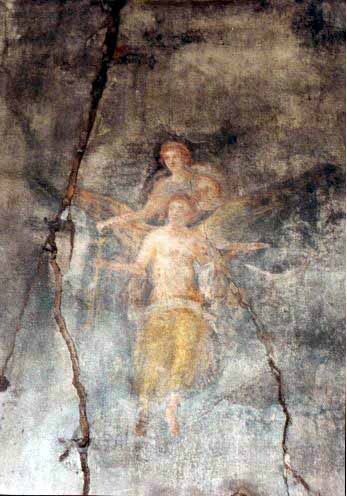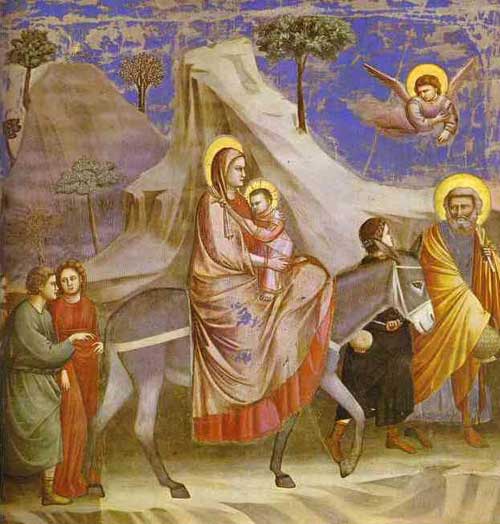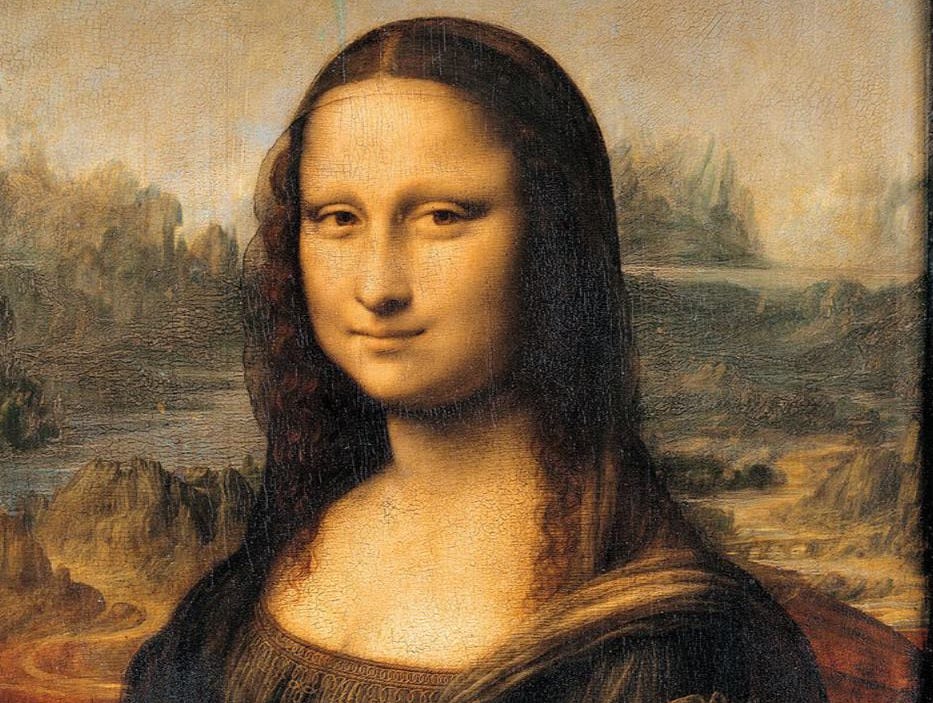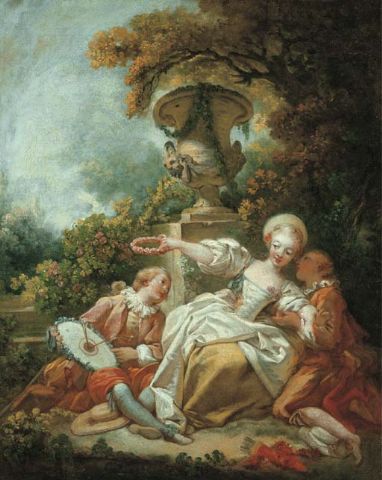Ancient and Classical European Art (~40,800BC- 300AD)
European prehistoric art is an important part of European cultural heritage, and is generally separated into four periods: Stone Age, Neolithic, Bronze Age, and the Iron Age. Attractions of this period mostly include small sculptures and cave paintings. Portable sculptures of Venus figurines have been found across Central Europe. Crude in nature and material, they were carved from soft stone, bone, or ivory, or formed of clay and fired. The figurines usually portray a woman, although a few depict those of an uncertain gender. Their original meaning is uncertain, but it has been frequently suggested that they may have served ritual or symbolic functions, like religious figures or self-depiction. Unknown Sculptors:
Figuative sculpture was greatly reduced with the beginning of the Mesolithic period, starting in about 10,000 BC. The oldest cave arts date back to 40,800 BC, and can be found in the El Castillo Cave in Spain. Cave paintings furnish valuable insight into the culture and beliefs of the era, with depictions of large groups with the human figures and animals as the main focus. The figures are often seen in battle, hunting, or dancing, as well as other activites such as clothing. Images of horses, bison, mamoths and other local animals painted on the walls of a cave at Lascaux are among the earliest known examples of painting found in Europe. They are known for strikingly keen observation and skillfull rendering of animal subjects. Unknown Hunter-Gatherers:

The earliest known pottery in Europe wass decorated with incised lines using a technique that spread throughout much of Europe. Among Minoan pottery examples, the most famous include the Kamares ware, which are characterized by colourful geometric patterns "painted exhuberantly and dramatically against a black-slip background." Indeed, the trend at the time was characterized by thin walled vessels, subtle symmetrical shaping, elegant spouts for pouring liquid, elaborate curvy decorations, and dark and light contrast. This fluidity later translated to a more stylized form of art with the dissociation of naturalism. Painting evolved with the creation of unique fashions, including wet-fresco techniques, where water translated pigment to the plaster of walls. Ancient Greece had great painters and sculptors as well. Black-figure vase painting and red-figure vase painting give glimpses into how Ancient Greek society functioned with painted stories. Unknown Sculptors:
Roman art came soon after, and was primarily focused on depictions of the gods and portraiture of the upper class. Among Roman paintings that survived time include wall paintings, like those at Pomeii and Herculaneum. These paintings were grouped into four main periods and contained the first examples of trompe-l'oeil, pseudo-perspective, and pure landscape. The first style (Incrustation) originated in the 2nd century BC, with imitations of marble veneering in which the decoration resembled slabs of colored marble, representing cultural aspirations of the growing middle class. The second style began in the early 1st century BC, opening walls with illusions of windows and porticos which looked out on imaginary scenes. The third style dates from the end of the 1st century BC, where Style 2's realistic architecture and open vista was rejected for depictions of closed walls to attempt to create a "picture gallery affect." The fourth style appeared after 62 AD, incoporating elements from all the previous styles and developing tapestries, aediculae, and screens. Unknown Artist: (Fresco, Villa of the Farnesina, Rome.)

Indeed, to understand Roman and Greek, as well as most art of the Classical (and the following Medieval) eras, one must understand their myths, legends, and religious rituals.
Medieval Art (~500AD- 1400AD)
Most surviving art of the Medieval period was, as previously stated, religious in focus. Artists got funding from the Church, and as such, much knowledge in perspective and understanding of the human figure in art was lost with the fall of Rome. Realism took the backseat to religious and iconic images. Below is an example of such: "The Flight into Egypt," painted by Giotto di Bondone.
As seen above, shapes and backgrounds rarely carry the focus in religious imagery unless intended to do so. Angelic and devote figures dominate the foreground instead. Four exciting styles of medieval art: Byzantine, Early Medieval, Romanesque, and Gothic. Byzantine art overlaps with Early Christian art until the iconoclasm period of 730-843. After that until 1453, Byzantine art developed into a massive art form, with its crowning achievements being the gigantic frescos and mosaics inside domed churches, most of which have been destroyed by natural disaster and appropriation in favor of mosques. Early Medieval art includes Celtic art among other Anglo-Saxon variety. This type of art saw a fusion with Germanic tradition. Important media included architecture, metalwork, and small carved work in wood or ivory. Romanesque art, from 1000 to the rise of Gothic art in the 12th century, reflected a period of prosperity, and was the first non-disjointed style to appear across Europe. Romanesque art was direct, brightly colored, and sophisticated. These include famous stained glass art. Gothic art was the culmination of these shifts, where painting in fresco and on panel took on new importances and by the end of the period began appearing with new printing media. Unknown Artist:

Renaissance Art: Early to Late Influence(~1400-1750)
The Renaissance is characterized by focus on the arts of aforementioned Ancient Greece and Rome, beginning in Italy, when Rome, Venice, and Florence began to reestablish themselves as cultural powerhouse. Realism becomes more enhanced with the addition of new techniques for perspective, representing three dimensional spaces more authentically. Artists also bgin to look at manipulation of light and dark, as seen in many of Da Vinci's and Titian's portraits. Humanist spirit and more secular subject matter dominate the transitional period between Gothic and Renaissance art. This mixture is most famously seen below, in Da Vinci's "Mona Lisa."
Renaissance Classicism spawned movements like Mannerism and Baroque, which took art to a new height with emphasis of detail in movement, lighting, and drama in the search of beauty. Some great painters from this era include Rembrandt and Velazquez. The art was part of the counter-reformation, the revival of spiritual life in the Roman Catholic Church. Baroque was ornate, elaborate, and richly colored. This can be seen in one of Caravaggio's "Paintings of Jesus Christ," seen below.

Baroque was soon replaced by the Rococo period, which emerged in France as a breath of more playful air with creamier and paler shades of grayed romance, celebration, and appreciation of nature. This could be seen below in one of Jean Honore Fragonard's newer (1775) paintings. Note the lighter color and the more relaxed subject material.

Neoclassicism, Romanticism, Realism (~1750-1900)
The countermovement to Rococo was Neoclassicism, which despised Rococo's superficiality and frivolity, desiring a return to simple order and pure classical antiquity. This was the artistic component of the Enlightenment movement, which put emphasis on objectivity, reason, and emperical truth, which became evidence in the art with emphasis on order, symmetry, and classical simplicity. This is most famously seen in the French painter David's "The Death of Socrates," a 1787 oil on canvas painting.
The subsequent countermovement to Neoclassicism's ideas took place with the Romanticism era, which rejected the objective and ordered nature of its predecessor. Romanticism placed emphasis on individuality, and an emotional approach to the arts. Subject matter included the power and beauty of the natural world, human emotions, and sought highly personal approach to art. Romantic art, much like Neoclassicism, took inspiration from ancient Greek and Roman art and methodology, but instead used the material to create symbolism and imagery. One of the lesser known artists, John Constable, encompasses these themes well in his painting below, titled "Hampstead Heath."

Art once more turns on its head with the emergence of realism in 19th century Europe, and the rapid alterations to society from industrialization. Squalor, poverty, and desperation sprang from the stacks of billowing black chimneys. Realism sought to accurately portray the conditions and hardships of the poor with the hope of creating social change rather than sitting on the observational sidelines. Realism offered stark visions of poverty and despair, and did not delude itself with glorification of life as did Romanticism. Honore Daumier was one of those painters. His painting below, " The Third Class Carriage," with dark shades and powerful facial expressions, offered a meaningful social commentary.
Modern and Postmodern Era (~1900-Present)
From the depths of realism grew Impressionism. Impressionists pioneered use of light in painting even more so than its predecessors. Post impressionism came after, the most notable of whom included Van Gogh, Gauguin, and Seurat, who revolutionized the mixture of light and color. Below, Monet's "Le Parlement" is a prime example of a generous dichotomy between lighter and darker shades.
Other sects popped up, many at the same time, including Surrealism, Cubism, and Expressionism. Postmodern art, or pop art, places a strong emphasis on irony, parody, and humour in general. This more ironic approach to art came with commercialism and celebrity, breaking down the rules and guidelines of what became regarded as "fine art." Marcus Jansen's " Surreal," featured below, illustrates the tenacity and continued appeal of the postmodern aesthetic.
